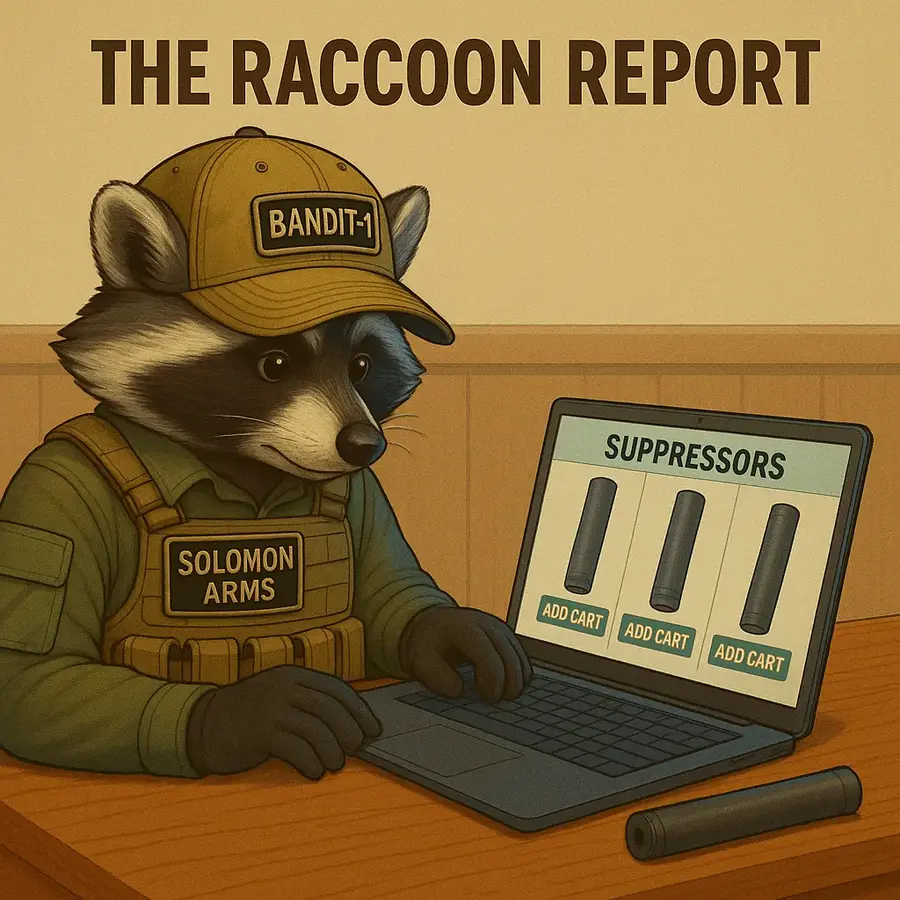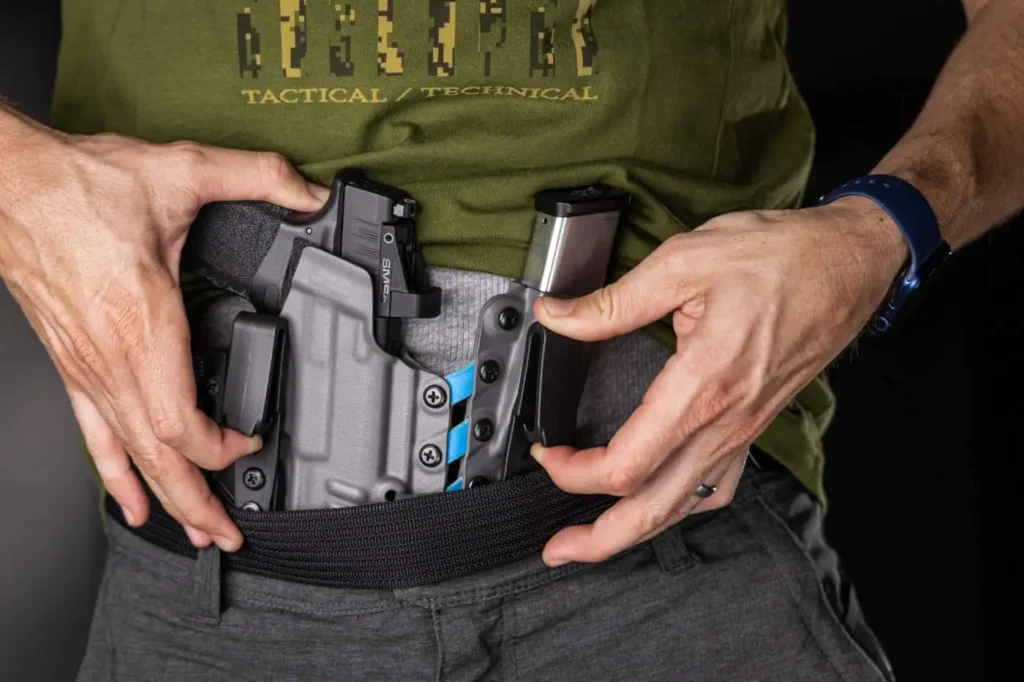Choosing the right optic is one of the best upgrades you can make to improve your shooting—whether you’re fine-tuning your AR, building a long-range bolt gun, or carrying concealed with a red dot-equipped pistol.
At Solomon Arms, we talk optics all the time with customers who want better accuracy, faster target acquisition, and more confidence at the range or in the field. But with so many red dots, LPVOs, scopes, and sight systems out there, it’s easy to get overwhelmed.
This guide breaks down the differences between optics for handguns, semiautomatic rifles, and bolt-action rifles—so you can pick the right tool for the job, and maybe even snag one from our online shop while you’re at it.
🔍 What Are “Optics,” Exactly?
“Optics” is the umbrella term for all sighting devices you mount to a firearm—like red dots, holographic sights, magnified scopes, and reflex sights. They’re designed to:
- Improve your accuracy
- Speed up target acquisition
- Enhance performance in varying light conditions and distances
Some optics are perfect for home defense. Others help you hit steel at 1,000 yards. The right one depends on what you shoot—and how you shoot it.
🔫 Pistol Optics: Speed, Precision, and EDC-Friendly
Handgun optics, especially micro red dots, have become a must-have for everyday carry, range training, and competition.
🔧 Types of Pistol Optics:
- Micro Red Dot Sights (MRDS): Non-magnified and compact, they sit on the slide or a mounting plate.
- Closed Emitter Red Dots: Sealed and more rugged (like the Aimpoint ACRO).
- Laser Sights: Mounted near the trigger guard; good for low light but not a replacement for red dots.
✅ Why Red Dots on Pistols?
- Faster follow-up shots under pressure
- Easier aiming for new shooters (less reliance on perfect sight alignment)
- Better performance in low light or dynamic shooting
- Allows for both-eyes-open shooting and enhanced situational awareness
Popular Models: Holosun 507K, Trijicon RMR, Leupold DeltaPoint Pro, SIG RomeoZero
💡 Looking to upgrade your carry gun? Check out our handgun optics here, or contact us about milling your slide or installing a plate system for your specific pistol.
🔥 Semiautomatic Rifle Optics: From CQB to Competition
Semi-auto rifles—especially the beloved AR-15—are extremely modular. That means your optic setup should match your intended use: home defense, range training, hunting, or tactical competition.
🔧 Optic Options for Semi-Auto Rifles:
1. Red Dot Sights (RDS)
- Zero magnification
- Fast target acquisition
- Pairs well with magnifiers
✅ Best For: Home defense, training, speed shooting
2. Low Power Variable Optics (LPVO)
- 1x to 4x, 6x, 8x, or 10x magnification
- Combines CQB and mid-range precision
- Illuminated reticles help in low light
✅ Best For: Versatile AR builds, 3-gun, ranch defense
3. Holographic Sights
- Better performance with astigmatism than traditional red dots
- Slightly bulkier but incredibly fast
- Crisp reticle, even in bright sun or low light
✅ Best For: Defensive carbines, professional use
4. Prism Scopes
- Fixed magnification (1x–5x)
- Etched reticle works without battery
- Better clarity at mid-range than red dots
✅ Best For: Budget-friendly builds, bug-out rifles, shooters with vision issues
🧰 Need help choosing an optic? Check out our AR-15 optics collection, or swing by the shop for expert help with mounting and zeroing.
Popular Models: Vortex Strike Eagle LPVO, EOTech EXPS3, Holosun 510C, Primary Arms SLx Prism
🎯 Bolt-Action Rifle Optics: Long-Range Precision
Bolt guns are all about accuracy, consistency, and distance. Whether you’re hunting coyotes in Arizona, benchrest shooting, or taking on a PRS match, you’ll need an optic that performs in the field—and holds zero in rough conditions.
🔧 Optic Options for Bolt-Action Rifles:
1. Traditional Rifle Scopes
- Variable magnification (e.g. 3–9x, 4–16x, 6–24x)
- BDC, windage, and parallax adjustment
- Long eye relief, often mounted on picatinny bases or cantilever mounts
✅ Best For: Hunting, target shooting, long-range steel
2. First Focal Plane (FFP) vs. Second Focal Plane (SFP)
- FFP: Reticle scales with magnification—great for ranging and adjusting
- SFP: Reticle remains the same size—easier for most hunters and beginners
3. MIL vs MOA
- Both measure clicks for adjustments—choose one and stick with it
- MIL is metric (easier for math), MOA is imperial (more common in the U.S.)
🔭 Need help getting dialed in? Our team can help level, torque, and zero your optic. Check out our scope mounting services
Popular Models: Vortex Viper PST Gen II, Leupold VX-5HD, Nightforce SHV, Primary Arms GLx FFP
📊 Optics Comparison Table
| Firearm Type | Optic Types | Best Use Cases |
|---|---|---|
| Handgun | MRDS, Closed Emitters | Concealed carry, duty, competition |
| Semi-Auto Rifle | Red Dot, LPVO, Holographic, Prism | Home defense, 3-gun, all-purpose ARs |
| Bolt-Action Rifle | FFP/SFP Scopes, Long-Range Glass | Hunting, long-range, PRS competitions |
🔥 Final Shots: Get the Right Glass for Your Gun
There’s no “one-size-fits-all” when it comes to optics. What works for a home defense pistol won’t help you hit steel at 800 yards—and your range rifle shouldn’t have the same glass as your deer gun.
Let Solomon Arms help you choose the right optic for your needs, your firearm, and your budget. Whether you’re mounting your first red dot or upgrading to an FFP scope for a bolt-action build, we’re here to help.
📦 Shop & Book Services
🔗 Browse Optics for Pistols, Rifles & Long Guns
🔧 Schedule Optic Mounting or Sight-In Service






